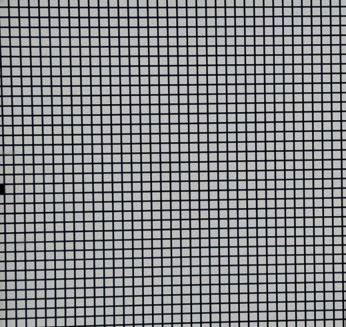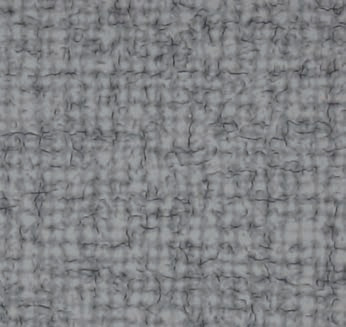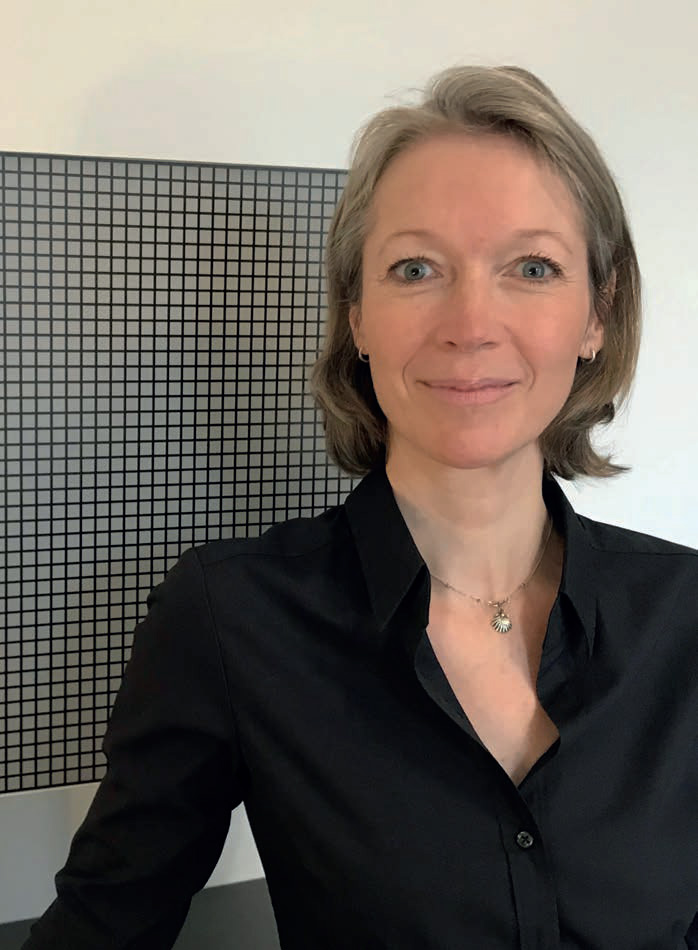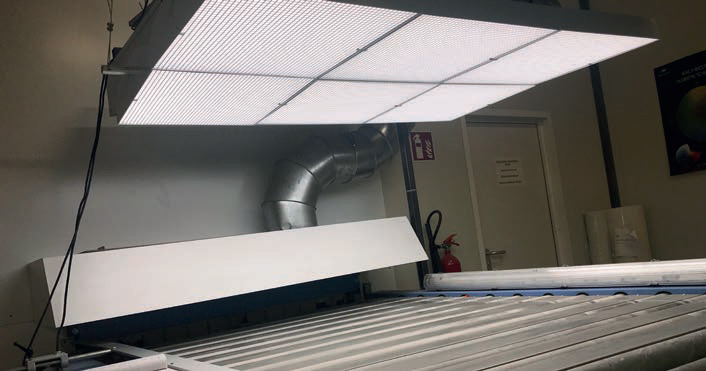Evaluating high gloss surface structures
27 November 2020A new device has been developed to evaluate the surface structure of high gloss surfaces in accordance with new standard EN 17214. Stephen Powney spoke to its developer Magali Hanser
Back in 2015 coating technologies specialist Magali Hanser was consulting on a project for an Indian kitchen component producer which had invested heavily in machinery.
The company had needed advice to optimise results for high gloss surfaces. She helped the company in its daily work with high gloss finishes and was asked if there was a system for simple evaluation of high gloss surfaces relating to the surface structure.
Ms Hanser then embarked on some personal research to see what existing methods there were.
She found that while there were obvious procedures commonly in place to measure the gloss itself, there was nothing specifically focused on the surface structure quality – a subject which has caused many discussions in the coatings and furniture production sectors.
“I really couldn’t find anything that was simple, easy and affordable,” she said. “Highly automated systems were out of the question.”
The quest led Ms Hanser on to talk to the Institut Technologique FCBA (Forêt Cellulose Bois-construction Ameublement) in Paris – the institute had carried out work in this area.
Ms Hanser co-ordinated with FCBA and developed a project to design a light box inspection device to evaluate high gloss surfaces, receiving help and advice from the institute.
At the same time a new EN standard was being developed by the European standards committee and the lightbox device was accepted as the evaluation method in the standard.
The standard – EN 17214: Visual assessment of furniture surfaces – was validated in November 2019 and describes and evaluates high-gloss surfaces in the surface structure. The lightbox (MHanser GlossIn) is the described reference device in the standard.
A reference grid is cast onto the test surface and the reflection of the louvre beamed onto the test medium is visually evaluated according to the standard and divided into one of five quality classes.
This evaluation of surface structure has nothing to do with the degree of gloss, but the standard distinguishes between waviness, orange peel and surface smoothness.
The standard is applied in many areas – production, incoming and outgoing goods inspection, quality monitoring and R&D.
In Demand
Ms Hanser told WBPI that the GlossIn lightbox evaluation device is increasingly in demand and is in successful use at many European furniture manufacturers and is proving useful as a testing device with the standard in the daily handling of high gloss surfaces.
“The reason for its development was of course the normative evaluation of high gloss surfaces but it is also proving itself as an aid for the internal quality control of manufacturers’ production, as an aid for the control of products from suppliers and in R&D,” she said.
She referenced the application in kitchen PVC front production, where there are numerous variable factors and technical differences which can have an influence on the high gloss surface quality and can be documented in a comparable way in EN 17214.
“For example, in the coating technology the difference between 0.5mm PVC foil or 0.7mm high gloss foil can be seen very well. Which glue from which manufacturer is used, what is the flow behaviour? With which atomizer pressure at the spray gun is the glue applied on the MDF? Which glue has better flow characteristics on the board? Even different MDF suppliers can be identified by the swelling behaviour of the top layer after pressing in the membrane press with the PVC foil using the testing device.
“The surface shrinkage during the ageing process is also a major issue. Especially in the lacquered high gloss the freshly lacquered surface still looks very good in production, this changes very much over time.
“What is the substrate, from which producer does the MDF board come, which primer do I use, how long does the primed board lie before sanding for degassing? How long does the high-gloss lacquered board lie before polishing, at what temperature? These are all questions.”
For the large board manufacturers that are further finishing MFC boards with the Kleiberit HotCoating process, the GlossIn multiple module is increasingly being used at the outfeed conveyor on the varnishing lines.
“Even the smallest change has an impact on the surface structure. A change in the viscosity of the topcoat used, temperature differences, the quality of the sanding belts for intermediate sanding of the coating, the age of the grooving of the rubberised coating application roller, coating eyes caused by bubbles in the coating at the pouring head – the devil is in the detail, especially in high-gloss finishing.”
The GlossIn is designed to be a reliable method of recognising these details visually and allow for assessment in accordance with EN 17214.
“There are always new applications where the standard and the testing device can help to accurately evaluate high-gloss surfaces,” added Ms Hanser.
“Many small set screws can be turned during production to improve the result. Weak points can now be found and corrected unerringly. Factors that influence the visual appearance of high-gloss surfaces can now be evaluated visually neutral.”
She said companies such as Kleiberit, which has seen high growth worldwide of its HotCoating process, faced the new standard early on and were one of the first to implement the advantages of simple highgloss evaluation.
“We also find such testing devices in use at production facilities outside the EU, such as PG Bison in South Africa.”
She said a large number of kitchen manufacturers including Nobilia and Häcker Küchen use the testing device for the incoming goods inspection or in the testing laboratories.
The next stage of development in improving the GlossIn is automatic camera recognition with the help of artificial intelligence. This will be designed to provide another big step towards process reliability of painting plants and comparability of surface qualities.
“The idea is to create an automatic classification in the five classes using KI neuronal pictures. We have already made tens of thousands of pictures.”



